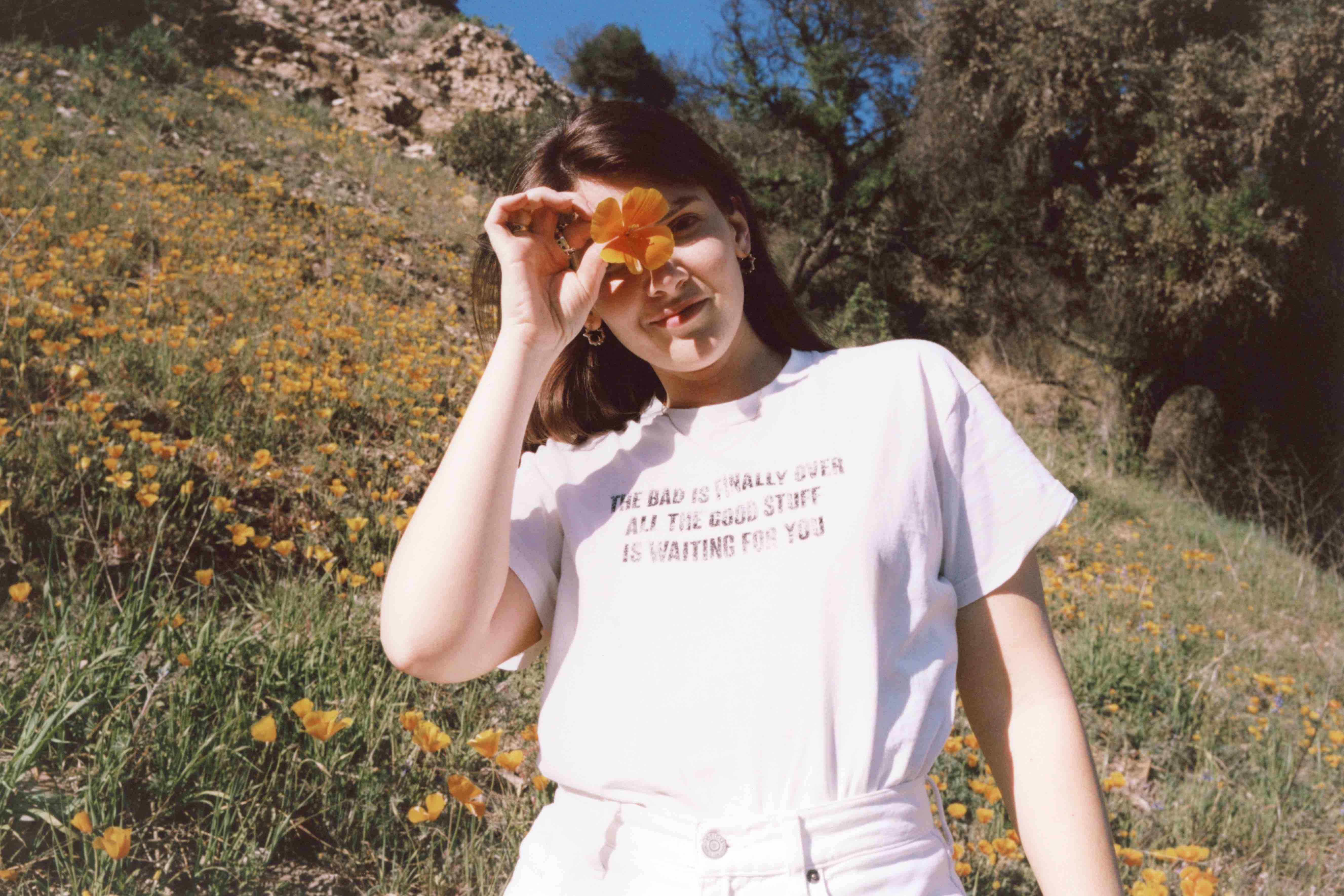Tess Roby has spent the better part of her twenties honing a minimal, haunting sound built around her immaculate vocals and carefully layered synths. The Canadian singer, composer, and photographer wrote her debut album, 2018's Beacon, in the aftermath of her father's death, which explains its surreal, sorrowful bent. But her sophomore album Ideas of Space is less organized around grief, she says, and more focused on growth.
Still, Roby's songs continue to take the form of entrancing, ambient journeys. Recent singles “Ideas of Space” and “Up 2 Me” find her working in a patient, seeking mode, while the Montreal-based musician's new single "Path" finds her trying to see anew. “Separate the memory from the truth / Now that I can look back,” she sings, her vocals gliding over a programmed drum beat courtesy of collaborator Austin Tufts.
“Path” also comes with a fittingly ethereal 16mm video—co-directed by Roby and Hugo Bernier—that shows Roby communing with the LA River. You can check out the visual and read a Q&A with Roby below, and pre-order Ideas of Space—out April 22 via her own label SSURROUNDSS—here.
What's “Path” about? How did the song come together?
“Path” started out as another song entirely—different lyrics and structure, but had various parts of what you hear now (notably the choral “ooohs” which run throughout the song, and the calypso drum machine beat). I kept coming back to this demo. At the time I wasn’t making so much music, and this song felt like a light at the end of the tunnel.
In January 2021 I was in the studio finishing the writing for the album and had a real moment with this song. Everything came so quickly and it was so exciting. I had the 16mm video footage that we shot in 2019 with me in the studio and that ended up inspiring the lyrics: “You’re looking down / I’m reaching out / if only I could see it like you do.”
What was your vision for the video? Where’d you shoot it?
The 16mm footage in this video was shot in 2019 in the LA River, before “Path” was written. Hugo and I went out that day not really knowing where we’d end up, and had just over a roll of film to shoot with. Everything we shot that day is in the video—we joke about having a 1:1 shooting ratio. Anyways, we kept forgetting about the footage but I always came back to its beauty and simplicity.
Like I mentioned, I had the footage with me in the studio and it ended up inspiring some of the lyrics. I had never worked like that before—my own footage influencing the songwriting—reversing the way I usually work with video. I loved that. So much has changed since that footage was shot. It was only natural to pair it with footage of me now, in this very moment, imagining if I could speak those words to myself then.
You've said before of your photography practice, “I just wish I could photograph my dreams.” Does music allow you to do that?
As soon as I start writing a song, scenery and images start to appear very quickly—writing on synth works well for this as certain tones and patches have such distinct qualities. Often I write lyrics in the same moment as I’m writing the melodies, so it all works together really—one big dreamscape! Music videos are such an amazing way for me to chase these visions. I love making them and directing them—they’re a really nice way to give the viewer an understanding of who I am as an artist.
How does your sophomore album compare to your debut, thematically and musically?
Beacon was written between 2015 and 2016. I was 21 years old, and had just lost my dad to cancer the year before. I was processing my grief and all of these memories we had together, all while finishing university, navigating changing relationships, and trying to find my place in the world. I recorded that album with Peter Woodford on 16 track tape at his studio, The Bottle Garden, in Montreal. Analog was my intro to recording, and I worked within those parameters, making minimal songs based around synth and guitar.
Ideas of Space has this energy for me—a confidence, a feeling of independence. I am at the helm for every aspect of this album, from the production, to directing all of the music videos, and even starting my own record label to release it. I feel so much growth between the two albums—as a vocalist, producer, musician, and as a person. It was also my first time inviting collaborators onto my songs—working with Austin Tufts, Joseph Shabason, and Ouri was such a beautiful experience and process. Records truly are the record of who you are in the moment you make them. I can only imagine what’s next.







